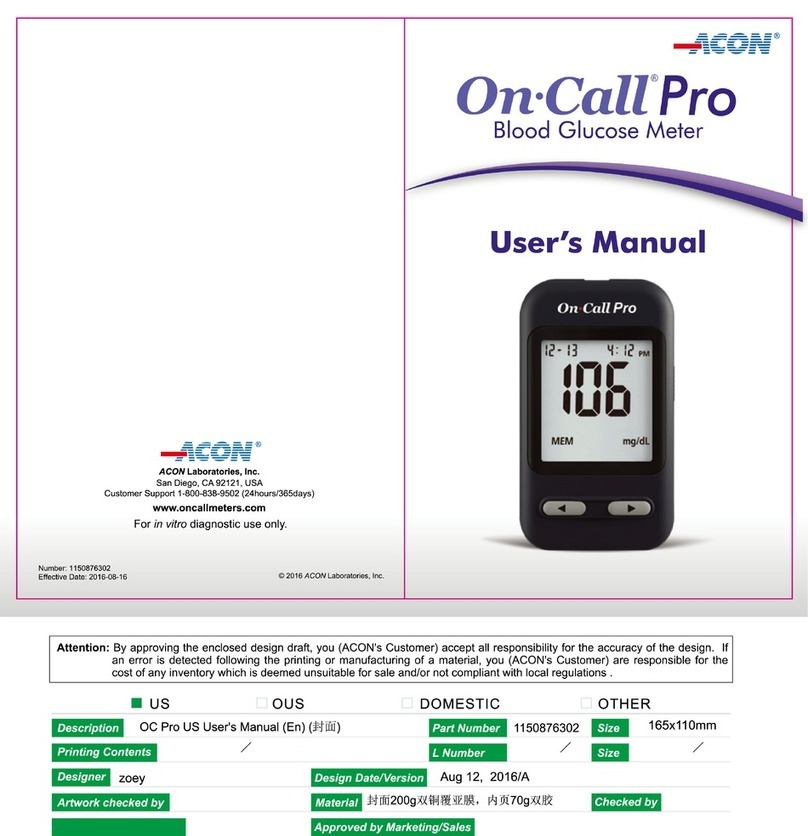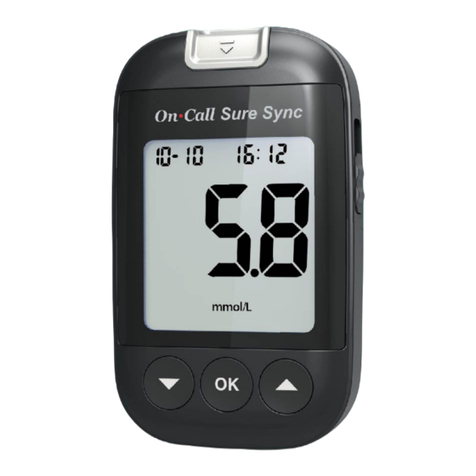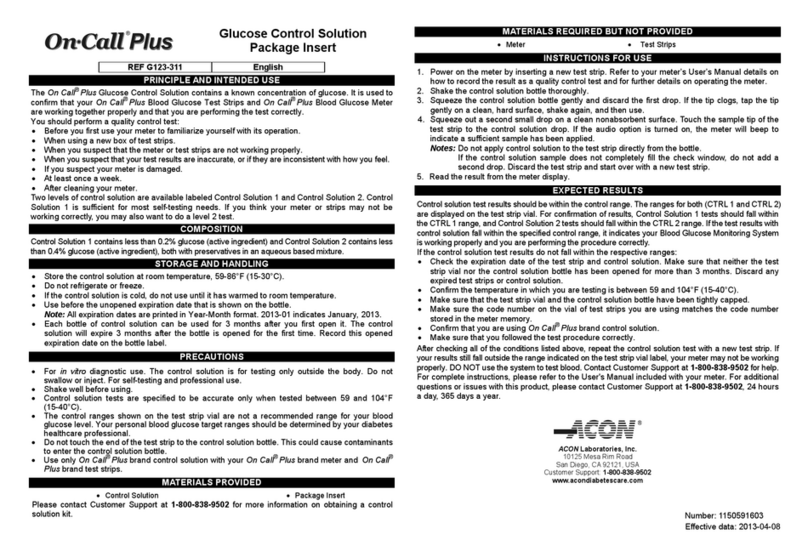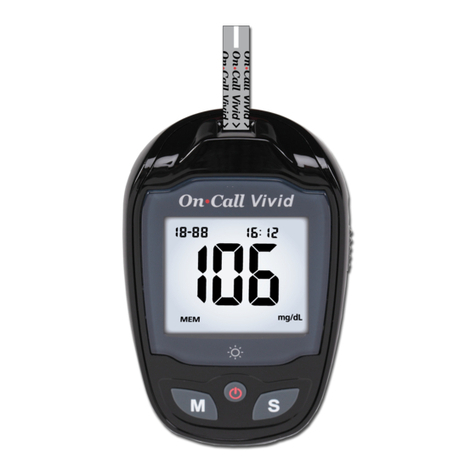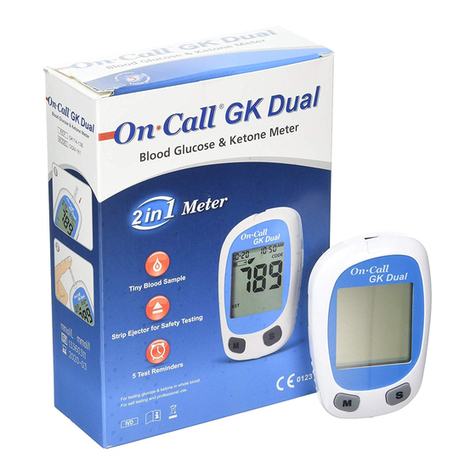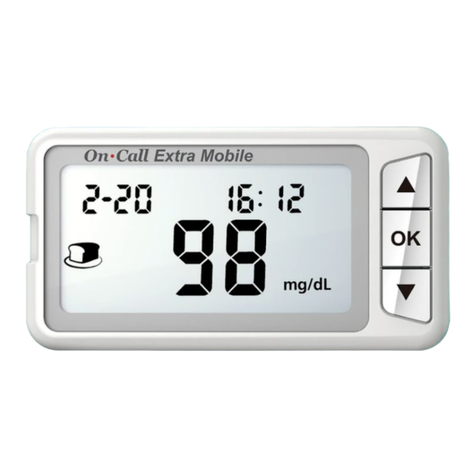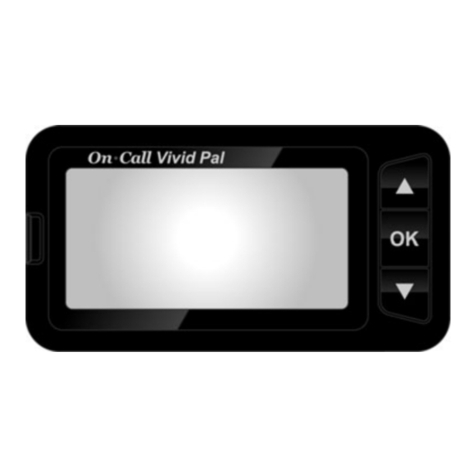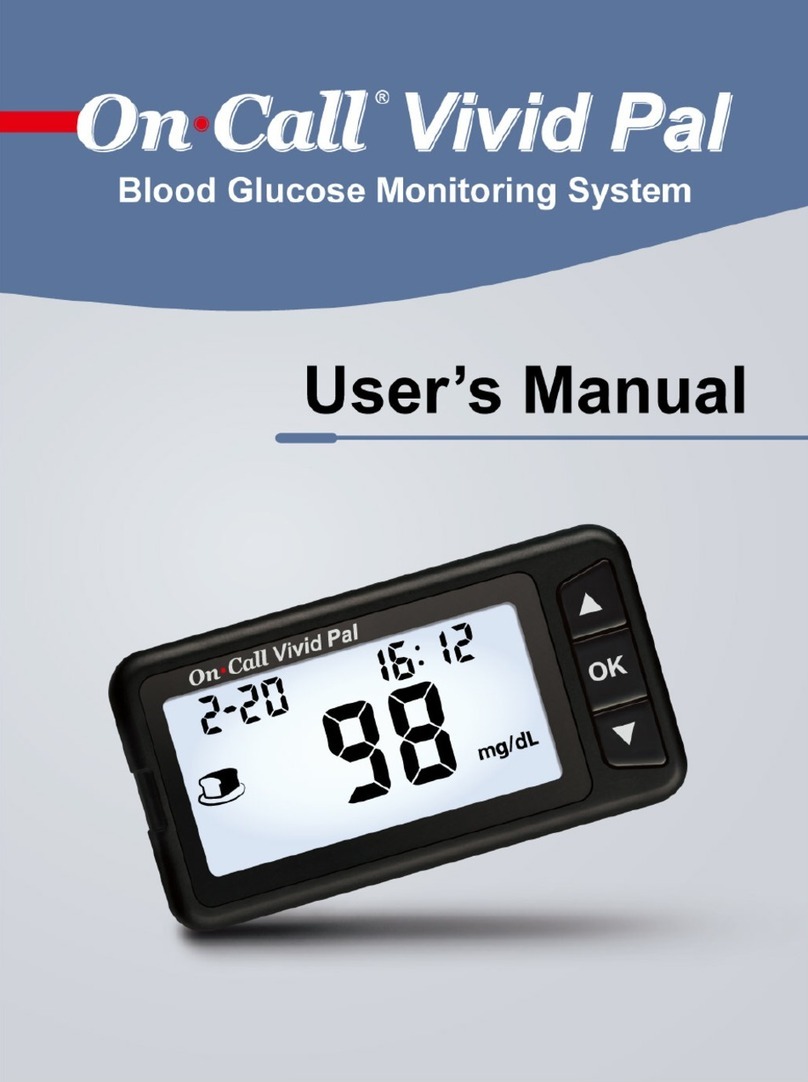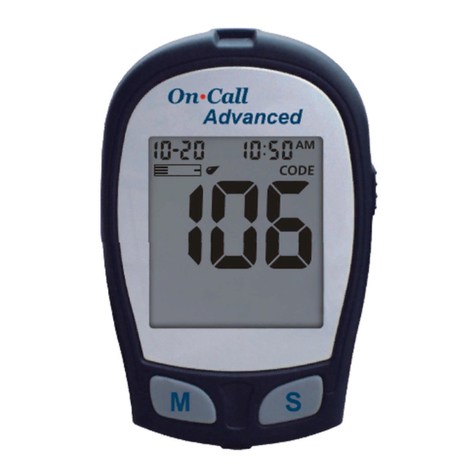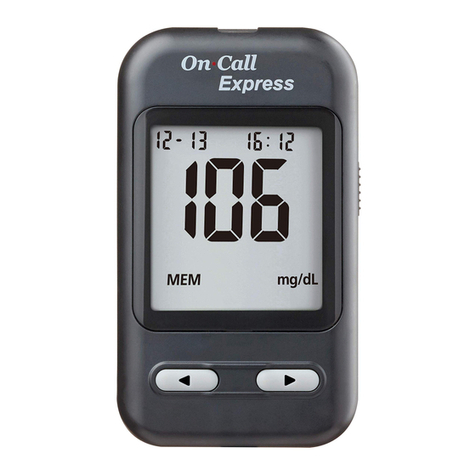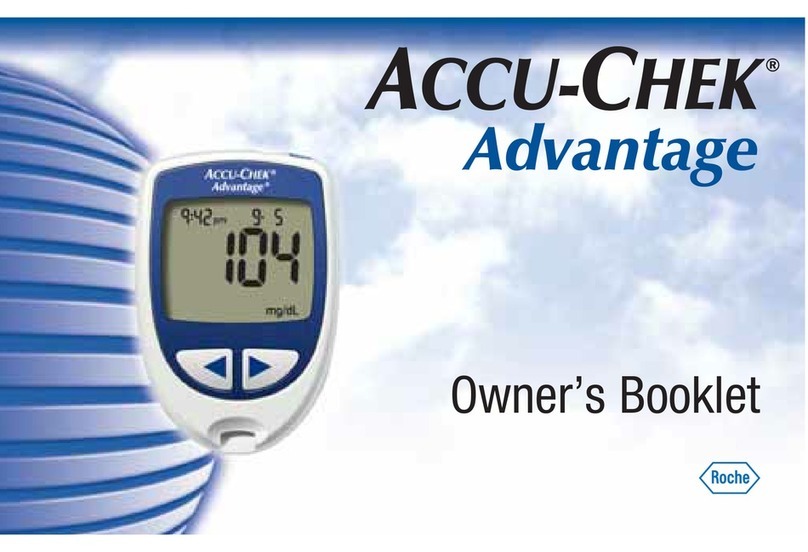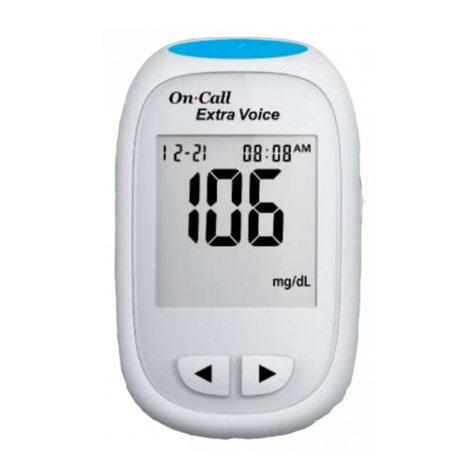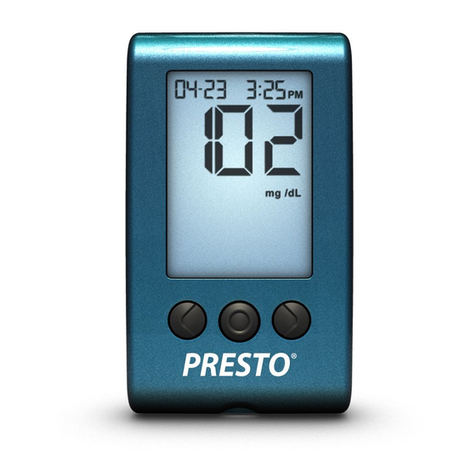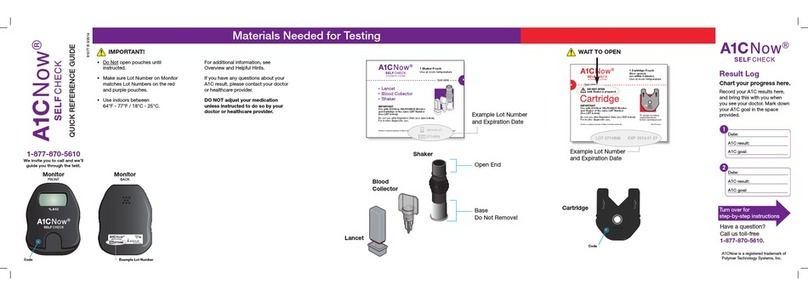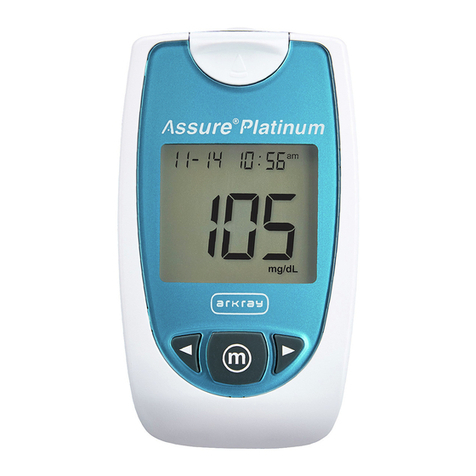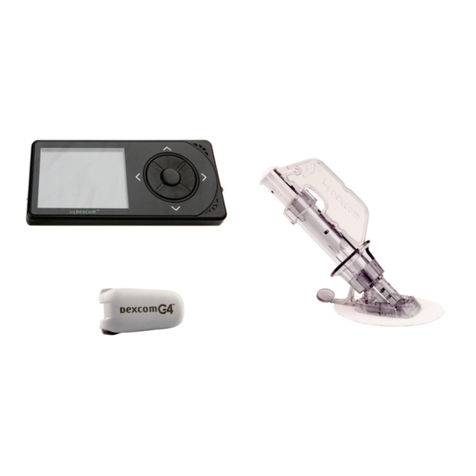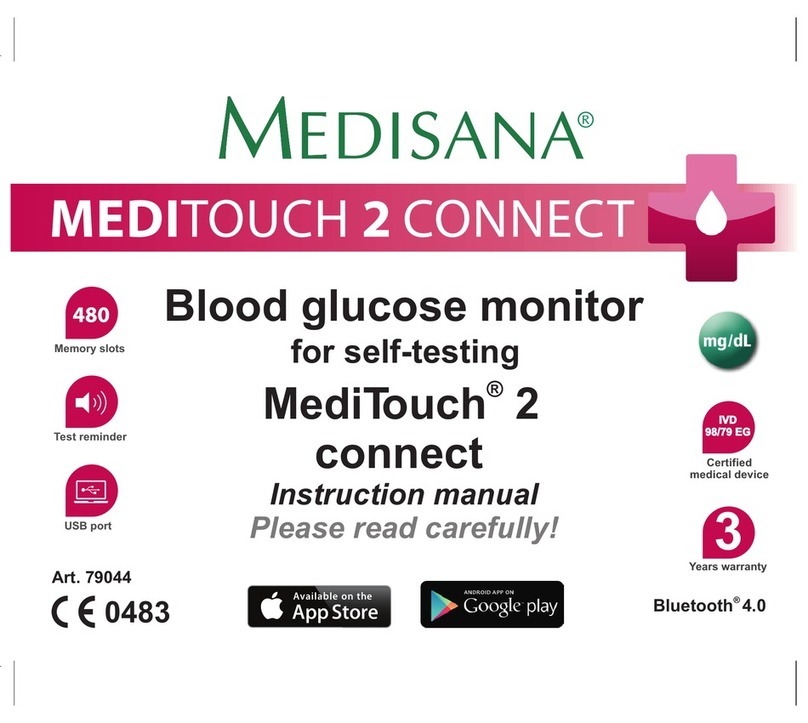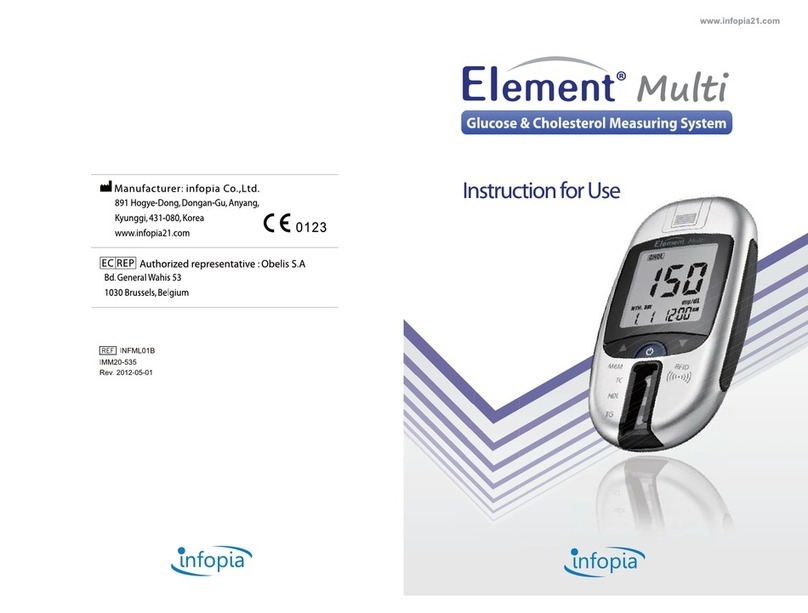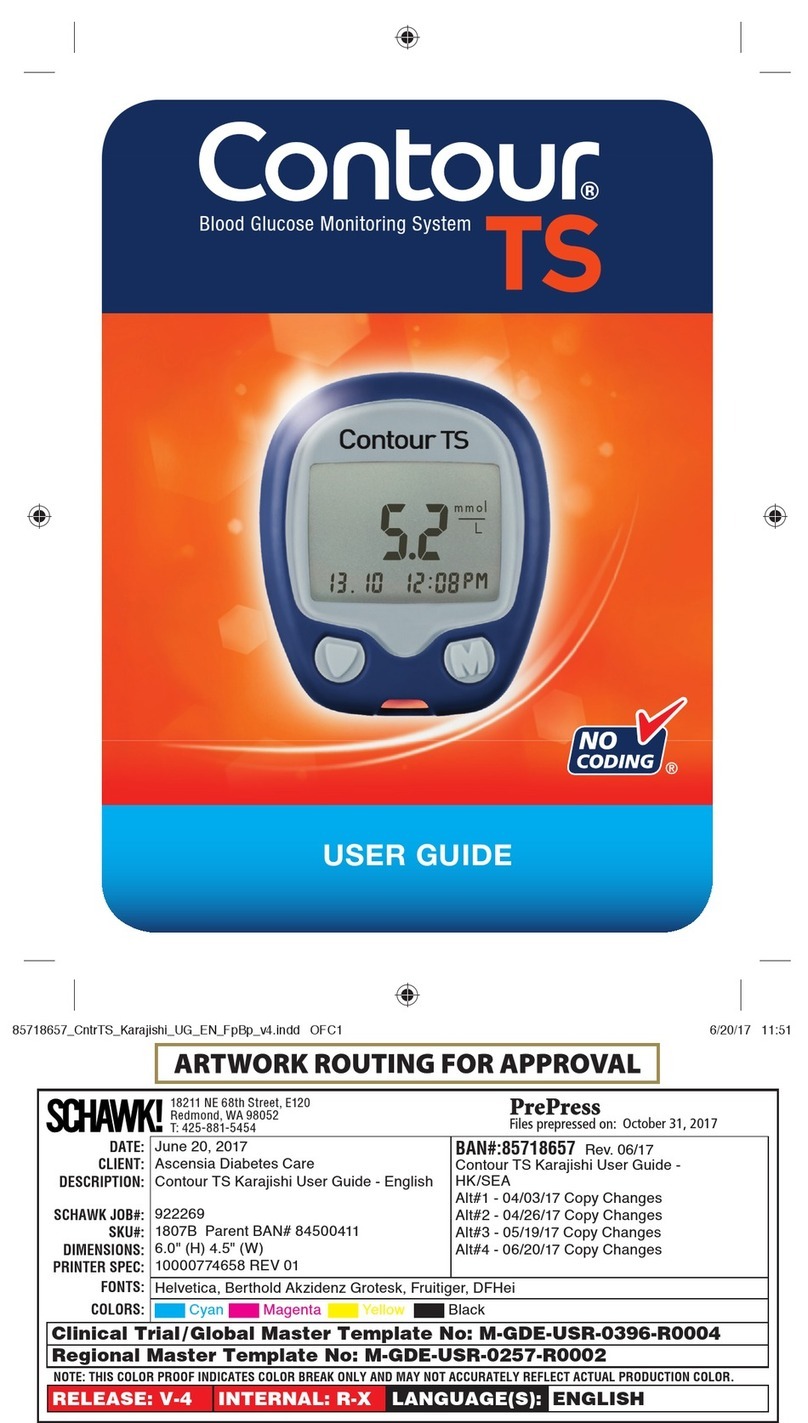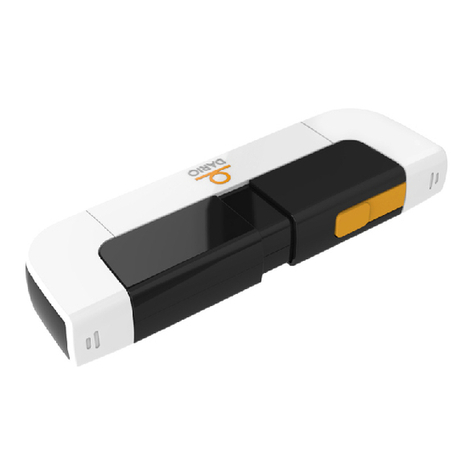i
Self monitoring of blood glucose (SMBG) is an integral part of diabetes care, but
the high cost of testing can make this impossible. At ACON, our goal is to provide
high quality glucose monitoring at a price that allows you to test as often as
necessary. Together, we can better manage your diabetes and help you live a
longer and healthier life.
Welcome, and thank you for choosing the On Call® Plus Blood Glucose
Monitoring System. The On Call® Plus Blood Glucose Monitoring System will give
you accurate blood glucose results in just a few simple steps.
To ensure accurate results from your On Call® Plus Blood Glucose Monitoring
System, please follow these guidelines:
Read instructions before use.
Use the code chip that accompanies each box of test strips.
Use only On Call® Plus Blood Glucose Test Strips with the On Call® Plus Blood
Glucose Meter.
For in vitro diagnostic use only. Your blood glucose monitoring system is to be
used only outside the body for testing purposes.
For self testing and professional use.
Test only whole blood samples with the On Call® Plus Blood Glucose Test
Strips and Meter.
For self-testers, consult your physician or diabetes healthcare professional
before making any adjustments to your medication, diet or activity routines.
Keep out of reach of children.
For help with any additional questions or issues, please contact Customer
Support at 1-800-838-9502.
By following the instructions outlined in this User's Manual, you will be able to use
your On Call® Plus Blood Glucose Monitoring System to monitor your blood
glucose and better manage your diabetes.
